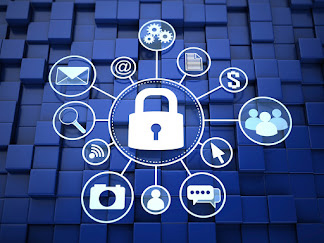WHAT IS A SCAREWARE?
Have you ever received sudden pop-up notifications or sound alerts claiming that your PC is infected with a multitude of viruses? Notifications are usually followed by a number to call or a link to download software to get rid of the problem. It is nothing more than a deceptive tactic known as "scareware".
Scareware has similar objectives to other cyber-attacks like phishing and ransomware. You've probably encountered it while browsing the internet, clicking on an app, or trying to download a browser extension.So what damage can scareware do to your device? And what can
you do if you see such a message?
What type of damage does scareware cause?
In addition to tricking you into purchasing questionable
software, the scareware also comes with a bag full of other damage.
Panic and
loss of finances
The audible alerts and high-pitched voice notifications create
hysteria that causes users to rush out to buy bogus software. You may be asked
to shell out from a few dollars to hundreds and the most anxious users just
comply with the spur of the moment.
Malware
installation
Some scareware can instruct users to download bogus software,
while others download automatically without user permission. This malicious
software can spread malware to infect your system, disable your programs, and
allow cybercriminals to access your personal information such as bank accounts
and credit card numbers.
Get spied
on
Some scareware can convince you to install malicious anti-virus software. But
it won't protect you from real viruses. In fact, hackers use it to spy on your
offline activities, access your sensitive information, and track your browsing
habits.
Device
dominance
Scareware could disable your existing antivirus software and
install malware to retrieve your personal data and potentially steal your
financial information. By collecting your data, clicks, and connections,
scareware can take full control of your device.
Different Types of Scareware
In March 2019, a settlement of $ 35 million was made between
Office Depot, its technology provider Support.com and the FTC on the basis of
allegations that a free software known as "PC Health Check Program"
has been downloaded to the customer's computers. This software also used
scareware tactics to sell diagnostic and repair services to customers.
Now let's take a look at the different ways that scareware can
present itself:
Attract
emails
Email spoofing can be used to send “urgent” emails requiring
immediate action. Innocent users are tricked into downloading a link to malware
in order to avoid a "potential" threat. They may also be asked to
share their credentials to allow bogus tech support to fix the issue.
Website
Popups
This form of scareware mainly resides on third party platforms
or websites and can be triggered when a user visits those websites. It makes an
appearance in the form of a pop-up or an ad asking the user to install software
on their device.
The links to download software are mostly Trojans and contain
malware. The pop-up window can look like a tiny, dormant banner or be so large
that it takes up the entire screen, preventing users from accessing website
content.
Technical
assistance calls
This type of Scareware falls into a gray area because
deceptive software is not involved. However, it relies on scare tactics of
calling targets and pretending to be tech support or law enforcement officers
telling them that suspicious activity has been traced back to their computers.
Once the target takes the bait, other persuasion and pressure
tactics are carried out, forcing victims to disclose sensitive and personal
information.
What To Do If You Are The Victim Of A Scareware Attack?
Here's how to protect yourself if you suddenly find yourself
in the middle of a scareware attack:
Update
all your browsers
Most users are too lazy to keep up with updates and ignore
this simple protective gear. By keeping your browsers up to date, the chances
of scareware infestations are reduced and best of all, you can even schedule
automated updates to keep your browsers safe.
Enable
pop-up blockers
It's obvious, but it goes a long way in protecting you against
Scareware. If there are no pop-ups, there will be no bogus ads or security programs
that try to rip you off.
Resist
the urge to click on links
Even after enabling the pop-up blockers, if some do appear,
resist the urge to click on any links or download buttons provided by them.
Encrypt
your emails
Email encryption is the process of securing your emails using
encryption algorithms. The good news is that by encrypting your emails or
opting for an encrypted email service provider, you can prevent
scareware-related emails from landing in your mailbox!
Install
legitimate antivirus software
The installation of an antivirus is an act of trust because
you give access to the analysis of all your personal files and folders. Always
invest in legitimate antivirus
software from reputable companies that you can recognize. Also avoid free
antivirus software because many free tools are bogus.
Warning Signs Of Scareware
Recognizing the warning signs of scareware is the first step
in mitigating these attacks. The typical warning signs of a scareware are as
follows.
Scary
pop-up ads
The purpose of Scareware is to scare you into buying bogus
software. Therefore, most of the pop-up windows will have disastrous warnings
or scary texts advising that your computer will crash soon. The more
threatening the message, the more likely it is to be scareware.
Annoying
pop-ups
If a pop-up window with a warning message is too hard to close
or keeps showing more warnings when you press the close button, it is most
likely scareware. The best way to get rid of it is to restart the computer.
Immediate
scan of your computer
To appear more legitimate, scareware immediately begins scanning your computer. Ultimately, a "fake" list with a ton of virus infections that have been discovered is displayed to users.




Comments
Post a Comment